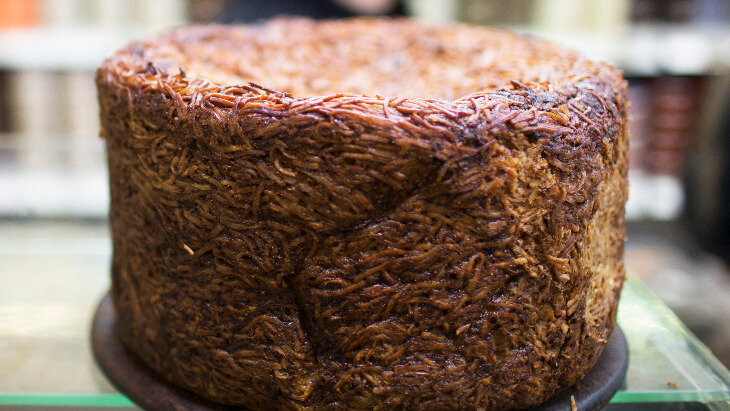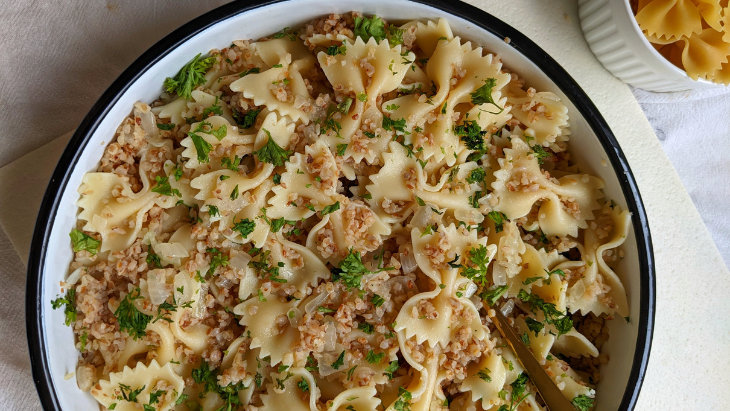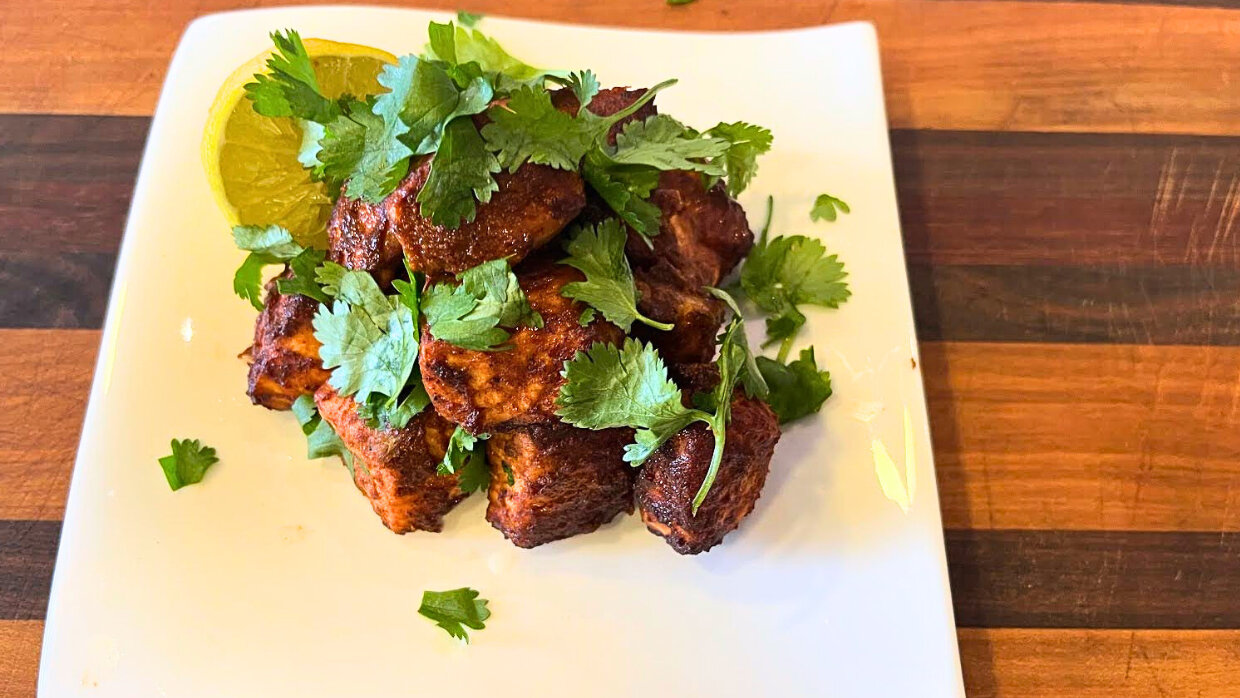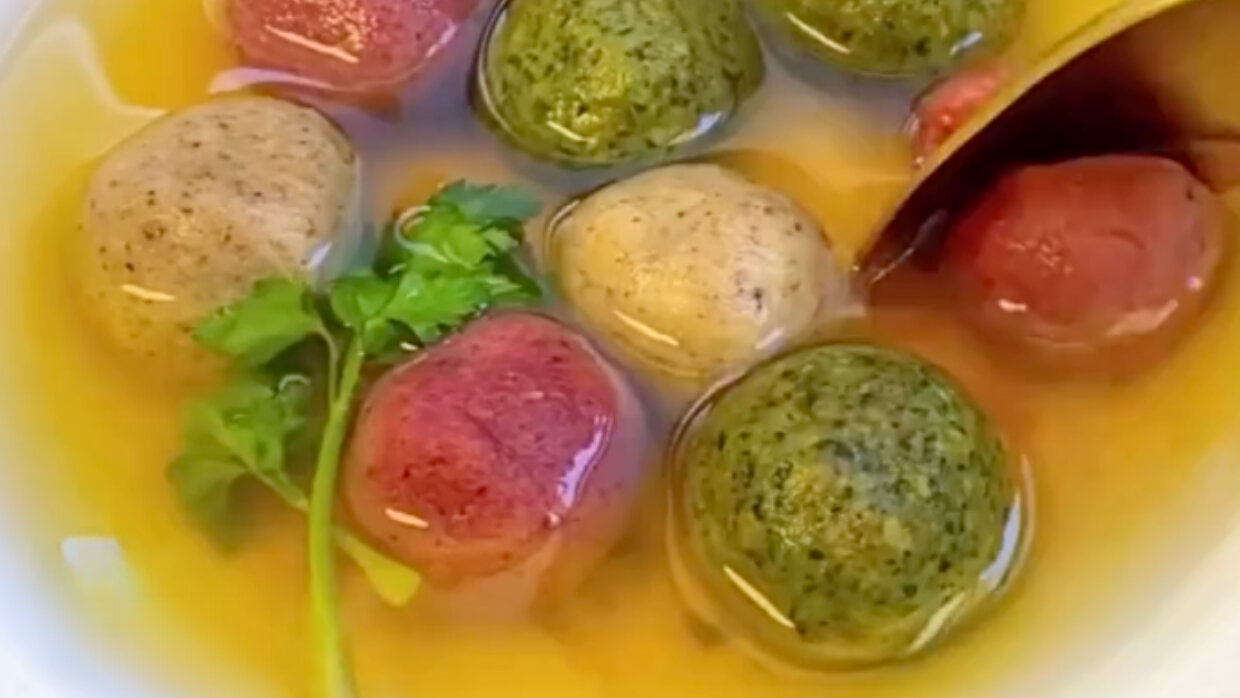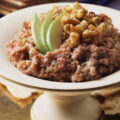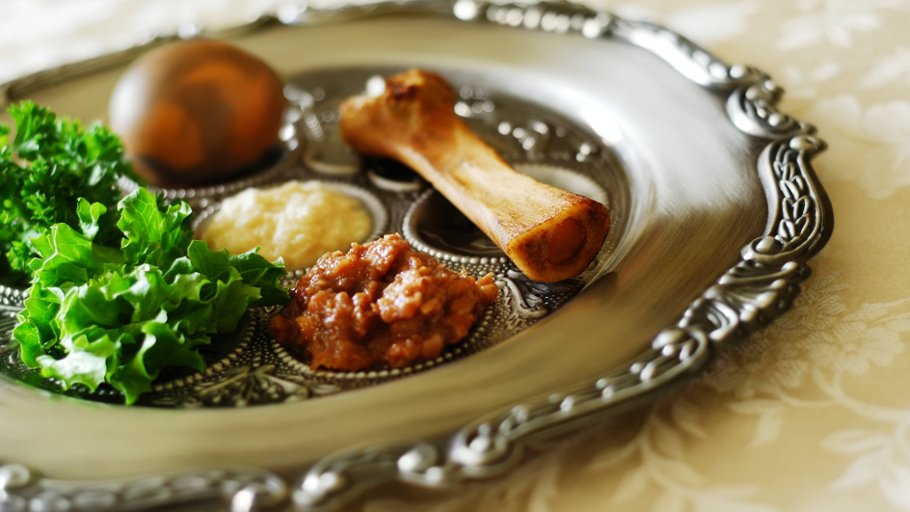Pasta is one of the world’s most popular and versatile foods. Less well known is that Jewish cooks helped shape pasta from its origins to today. Here are some little-known facts about Jews and Pasta - and recipes for Jewish pasta dishes.
Jewish Origins?
Italian and Chinese chefs have long claimed that noodles were invented in their countries, but the reality might be something far more surprising. The earliest record of noodles - and the original source that most closely describes the type of food we call noodles today - is the Jerusalem Talmud, written in the Land of Israel nearly 2,000 years ago.
At the time, dough was certainly being eaten in China. In 2005, archaeologists found earthenware pot in the Late Neolithic lite of Laijia in northwest China. It seemed to contain what might have been a stretchy dough made out of millet; scholars speculate that these strips of dough were the earliest known noodles. Yet Jen Lin-Liu, author of On the Noodle Road: From Beijing to Rome, with Love and Pasta (Riverhead Books: 2014) credits the Jerusalem Talmud with the earliest known reference to noodles as we recognize them today, as opposed to early versions of Chinese dough.
“The oldest historical mention of noodles I could find,” Lin-Liu has explained, “appears in a dictionary from the third century A.D. in China. The earliest Chinese noodles, though, don’t appear as strands of dough - they were shaped into little bits, formed from bread dough, and thrown into a wok of boiling water.”
Lin-Liu notes that the Talmud’s mention of noodles - roughly contemporary with this first mention of noodles in Chinese literature - seems to resemble modern day noodles much more closely.
“Rabbi Samuel bar Abba asked about noodle dough,” the Talmud notes (Jerusalem Talmud Beitzah 1:9). The noodle dough Rabbi bar Abba was talking about was pounded, then apparently stretched, dried, and boiled . The term he used was אִטְרִיתָא - itrita. According to food historian Gil Marks, some historians speculate that this word comes from the Greek word itrion, meaning a sesame and honey wafer used in religious rituals; others contend it might come from the Farsi word itriyah, a Persion dish of boiled dough. It’s similar to Itriyot, the word for noodles in Hebrew today.
Another Talmudic reference to one of the world’s very first pasta dishes occurs in the Babylonian Talmud, compiled in Babylonia in the late 5th Century. Discussing what blessing to say over various foods, the Jewish sage Raba uses the example of a hearty noodle dish made with honey that was eaten by farm workers and known as rihata (רִיהֲטָא) (Talmud Berachot 37b). This name somewhat resembles the modern Farsi word for noodle, reshteh.
Medieval Jewish Pasta
It’s often said that pasta was introduced to Italy by the traveler Marco Polo, who explored China during the Middle Ages and died in 1324 in his native Venice. Yet a century before Marco Polo lived, another intrepid Medieval traveler, the Muslim explorer, writer and cartographer Muhammad Al-Idrisi (1100-1165) visited Sicily and observed Sicilian Jews - but generally not their non-Jewish neighbors - eating pasta dishes. Food historian and cookbook writer Clifford Wright, researching the origin of that most popular of Italian pastas, macaroni, found that the earliest macaroni production seemed to be amongst the Medieval Jewish community in Sicily. From there, it gradually spread throughout Italy and eventually became a national favorite.
The Jewish sage Kalonymus ben Kalonymus, who was born in the French city of Arles in 1286, lived variously in Italy and in Germanic lands - and was a big fan of pasta. He wrote about an ideal Purim meal which featured macaroni and tortelli (a filled pasta like modern tortellini) and observed Jews both in Italy and in Germanic areas - long before noodles became a mainstream in central Europe - enjoying pasta. Rabbi Kalonymus himself enjoyed noodles with honey as a Shabbat dessert on Friday nights.
Pasta Goes Ashkenazi
Pasta dishes spread like wildfire throughout European Jewish communities and were embraced by Jews in communities long before noodles became popular foods among Gentiles. One hint of this is the early Yiddish word for noodles: frimsel, comes not from the German like so many Yiddish words, but from the Italian vermiculos, literally “little worms” and the root of the Italian word for vermicelli. (The term frimsel lives on in many Ashkenazi dishes; in time, the term lokshen - from the Polish word for noodle, lokszyn - became a more popular word for noodle in Yiddish). The Yiddish slang term for a tall person, a langer lucksh, literally means a long noodle.
Food historian Gil Marks notes that it was “Italian Jewish merchants and immigrants (who) brought vermiculos to the Rhineland”, spreading the popularity of noodles - then considered a largely Jewish food - to new communities. (Quoted in Encyclopedia of Jewish Food by Gil Marks. John Wiley & Sons, Inc.: 2010.)
Cornerstone of Shabbat Cooking
Food historian Claudia Roden notes that making noodles “was once the cornerstone of feminine dexterity. It was part of the two main Sabbath meals, and Friday preparations in the shtetl involved the making of noodles for chicken soup as well as for the kugel (pudding), which could be savory or sweet. Every housewife owned a large wooden pastry board and a long thin rolling pin like a broomstick to make it….” (Quoted in The Book of Jewish Food: An Odyssey from Samarkand to New York by Claudia Roden. Alfred A. Knopf, Inc.: 1996.)
As noodles gained even more popularity in European Jewish kitchens, housewives invented what would soon become a mainstay of Shabbat meals: noodle kugels. For years, kugel (the word means a round shape in German) were balls of dough that were cooked inside families' cholent (Shabbat stew) pots overnight on Friday night, imparting a delicious taste to the kugel inside when it was eaten as part of Shabbat lunch. Eventually, women began to mix cooked noodles with eggs, shmaltz and other flavorings and cook these puddings inside their Shabbat stew pots instead. Some cholent pots were even made with special compartments on the top in which to insert the Shabbat kugel. Eventually, some cooks began baking their noodle kugels separately. Varieties abound: noodle kugel can be sweet or savory, flavored with fruits and honey and sugar, or with onions and salt and pepper, forming an economical and delicious Shabbat dish.
The late British cooking doyenne Evelyn Rose recalled “I have an early memory of my late grandmother cutting the lokshen for the Sabbath meals, her hand with the knife moving so surely and swiftly that it appeared as no more than a blur to my child’s eye. Then she would hang the fine ribbons over a wooden clothes-horse draped with snowy tea-towels to dry, ready to be put into the chicken soup or made into a savory or sweet lokshen kugel. (Quoted in The New Complete International Jewish Cookbook by Evelyn Rose. Robsson Book: 1997).
In Italy, Shabbat-observant Jews added another classic way of eating pasta to the national repertoire: since it’s forbidden to cook on Shabbat, many Italian Jews found it easy to serve their first pasta course cold, thereby inventing pasta salads which are still popular today. One classic Italian Shabbat dish was Tagliolini Freddi alla Salsa di Pomodoro, cold Pasta with Tomato Sauce. Another cold Shabbat dish, Tagliolini con la Bagna Brusca o Salsa Agresta, brings the Sephardi flavors of egg-lemon sauce to this popular Jewish Italian dish.
Israeli Pasta
Given this long Jewish embrace of pasta, it’s no surprise that pasta is one of the most popular foods in Israel today. A recent survey showed that fully 94% of Israelis buy pasta and nearly ⅔ of Israelis eat pasta at least once a week. One popular Israeli pasta fish is Israeli couscous: large pearls of pasta that can be tossed with myriad other ingredients for for a quick and easy twist on traditional pasta dishes.
In April 2022, researchers at the Hebrew University in Jerusalem announced a breakthrough that might change the way we cook pasta: “shape-shifting” noodles that can be flat packed as strips of plain dough, and are preprogrammed to adopt to a different, curly shape - whether corkscrews, elbow, bow ties or something else - once they’re boiled in water. “Our shape-shifting pasta technology has the potential to transform the manufacturing, transportation and storage process,” noted Prof. Eran Sharon.
Here are some classic Jewish pasta recipes to try, just in time for International Pasta day. Bon Appetit or, as we say in Israel, B’te’avon!
